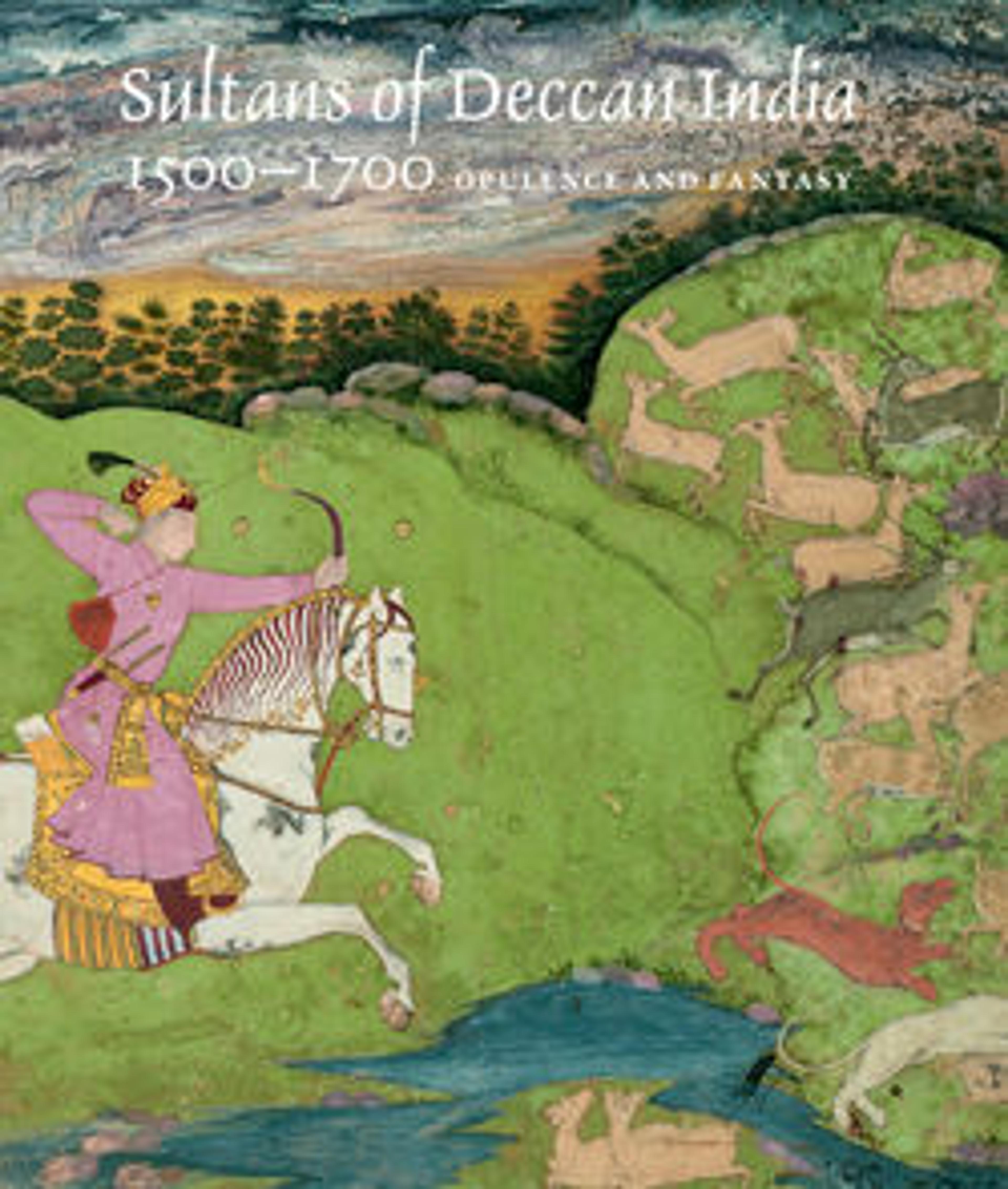Kalamkari Rumal (Cover)
A number of chintz rumals and large summer carpets bear inventory notations written by clerks in the storeroom of the Amber Palace, near Jaipur. This rumal has only a brief notation indicating an inventory date of November–December 1673. Some rumals have more informative notations, giving multiple inventory dates, sizes, and even prices. This example shows scenes of courtly life involving figures in both Persian and Indian dress.
Artwork Details
- Title: Kalamkari Rumal (Cover)
- Date: 1640–50
- Geography: Attributed to India, Deccan, Golconda
- Medium: Cotton; plain weave, mordant painted and dyed, resist dyed
- Dimensions: Textile: L. 24 in. (61 cm)
W. 36 in. (91.4 cm)
Mount: H. 30 5/16 in. (77 cm)
W. 41 3/8 in. (105.1 cm)
D. 1 in. (2.5 cm) - Classification: Textiles-Painted and/or Printed
- Credit Line: Rogers Fund, 1928
- Object Number: 28.159.1
- Curatorial Department: Islamic Art
More Artwork
Research Resources
The Met provides unparalleled resources for research and welcomes an international community of students and scholars. The Met's Open Access API is where creators and researchers can connect to the The Met collection. Open Access data and public domain images are available for unrestricted commercial and noncommercial use without permission or fee.
To request images under copyright and other restrictions, please use this Image Request form.
Feedback
We continue to research and examine historical and cultural context for objects in The Met collection. If you have comments or questions about this object record, please complete and submit this form. The Museum looks forward to receiving your comments.
